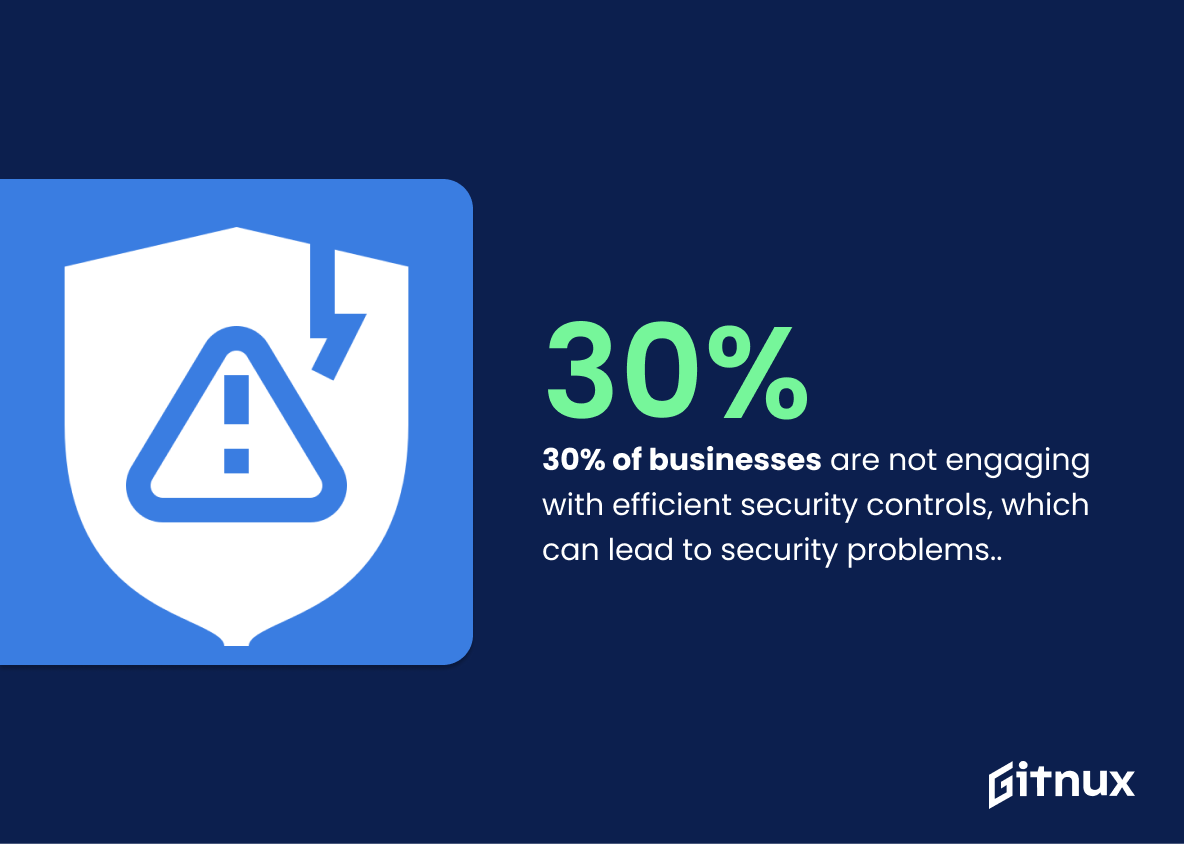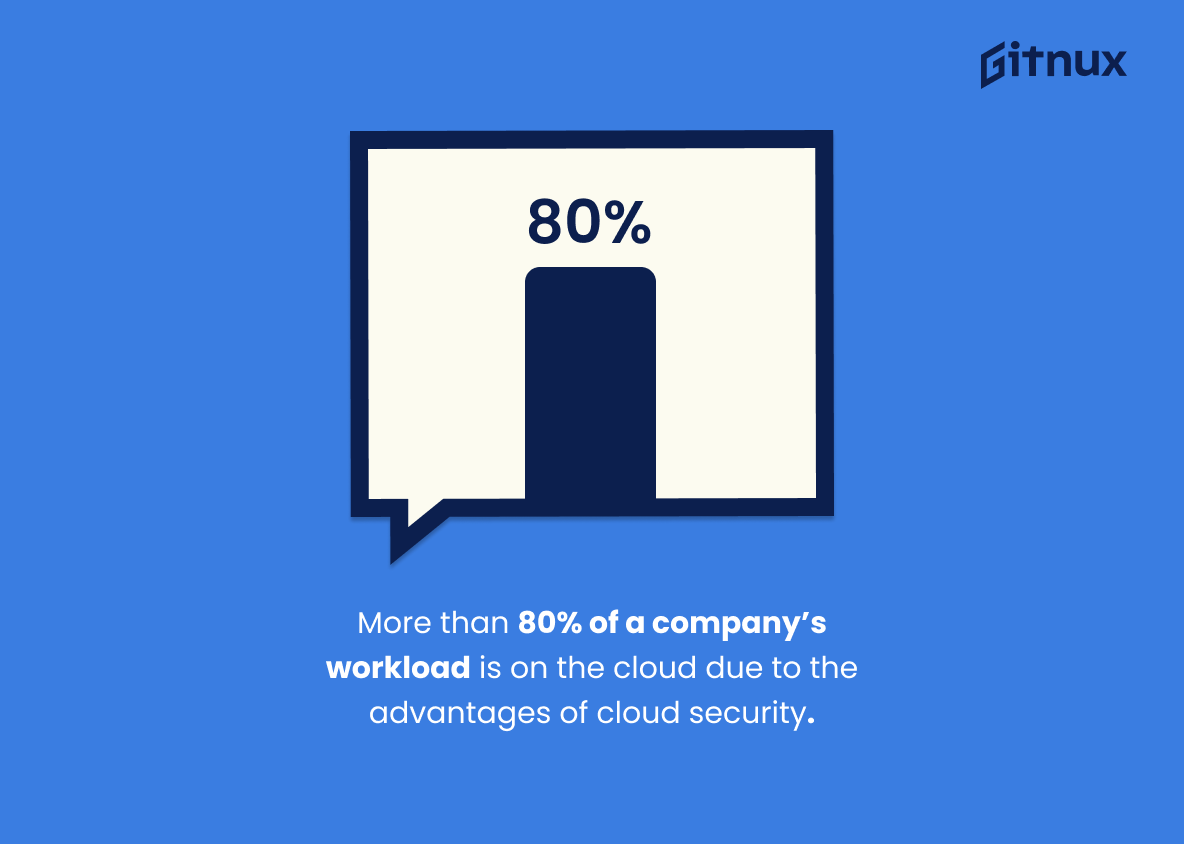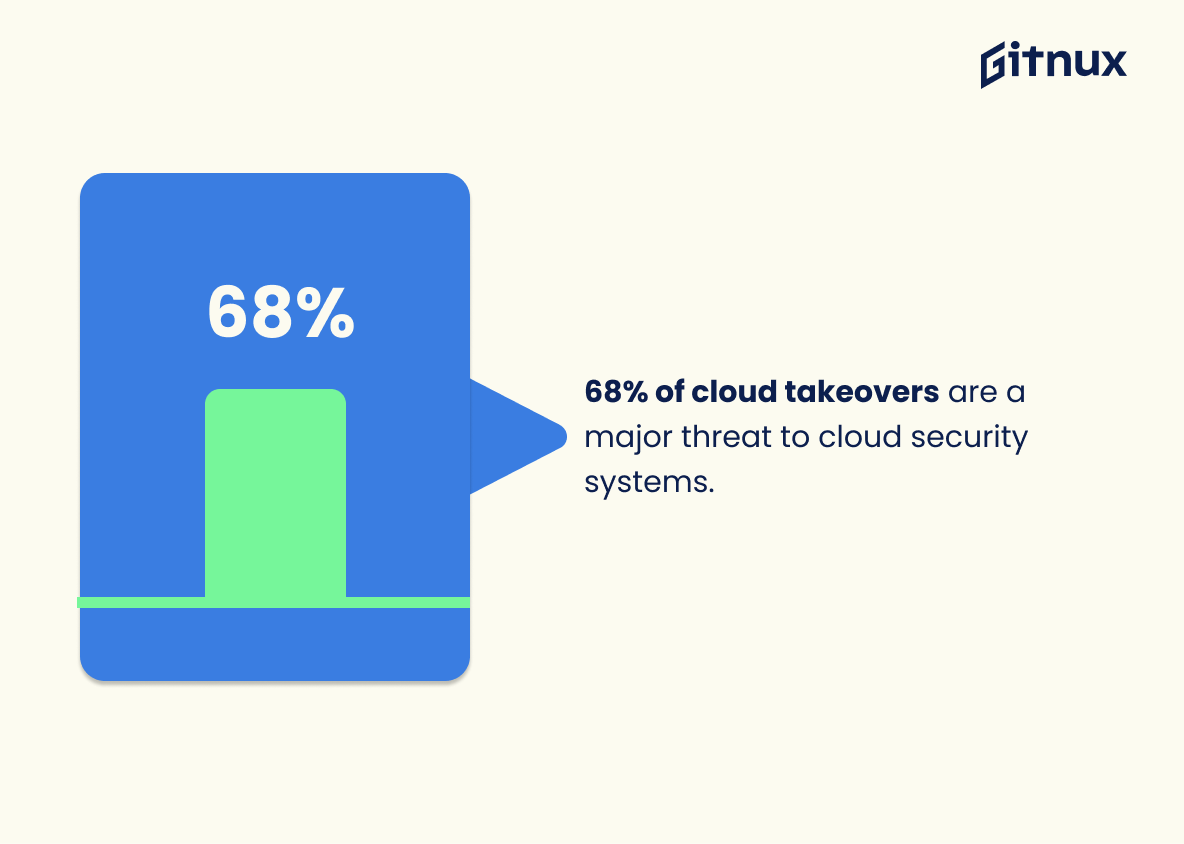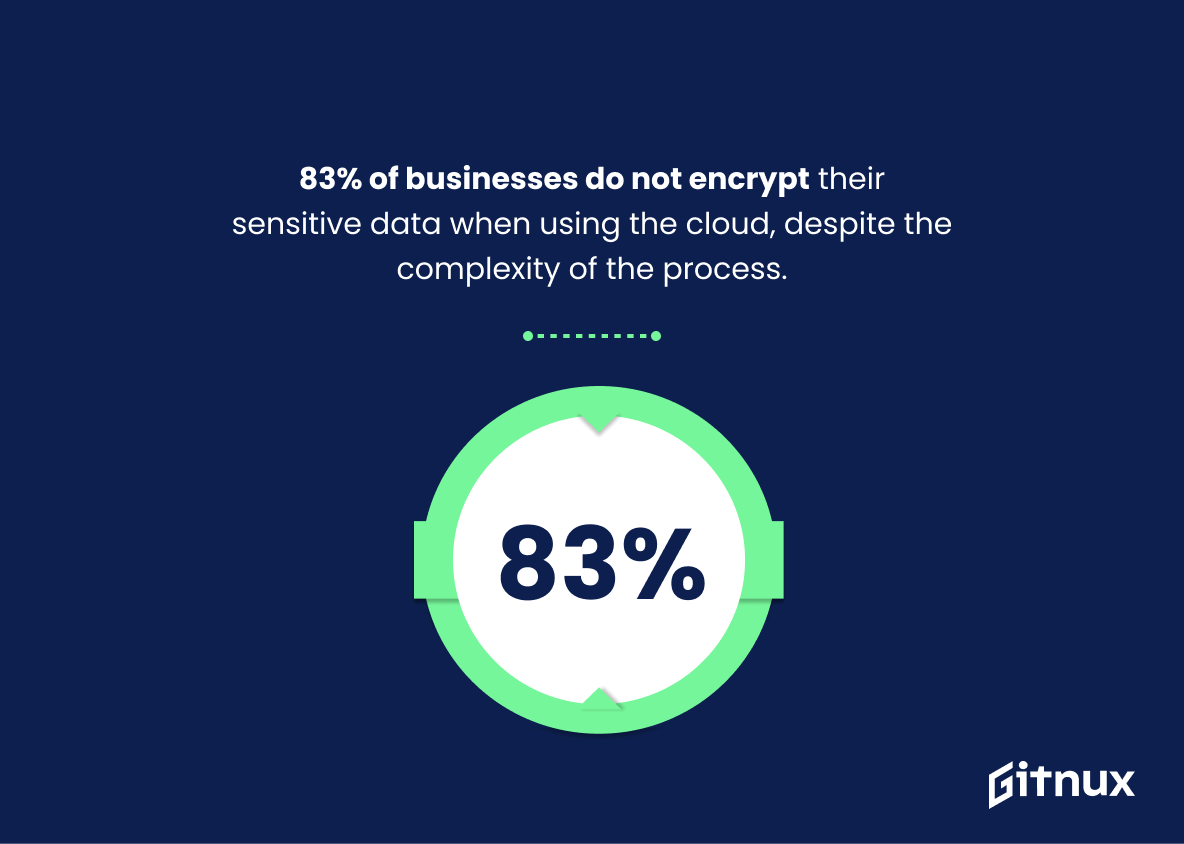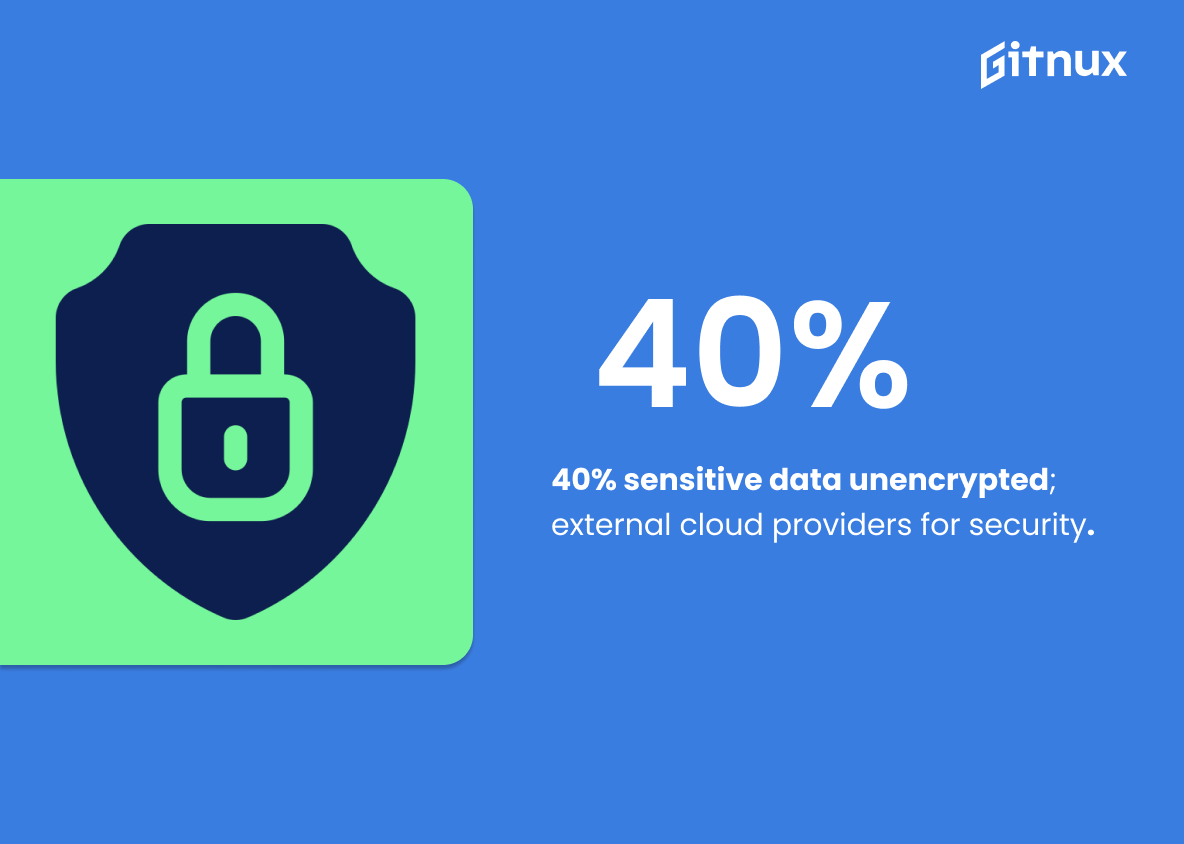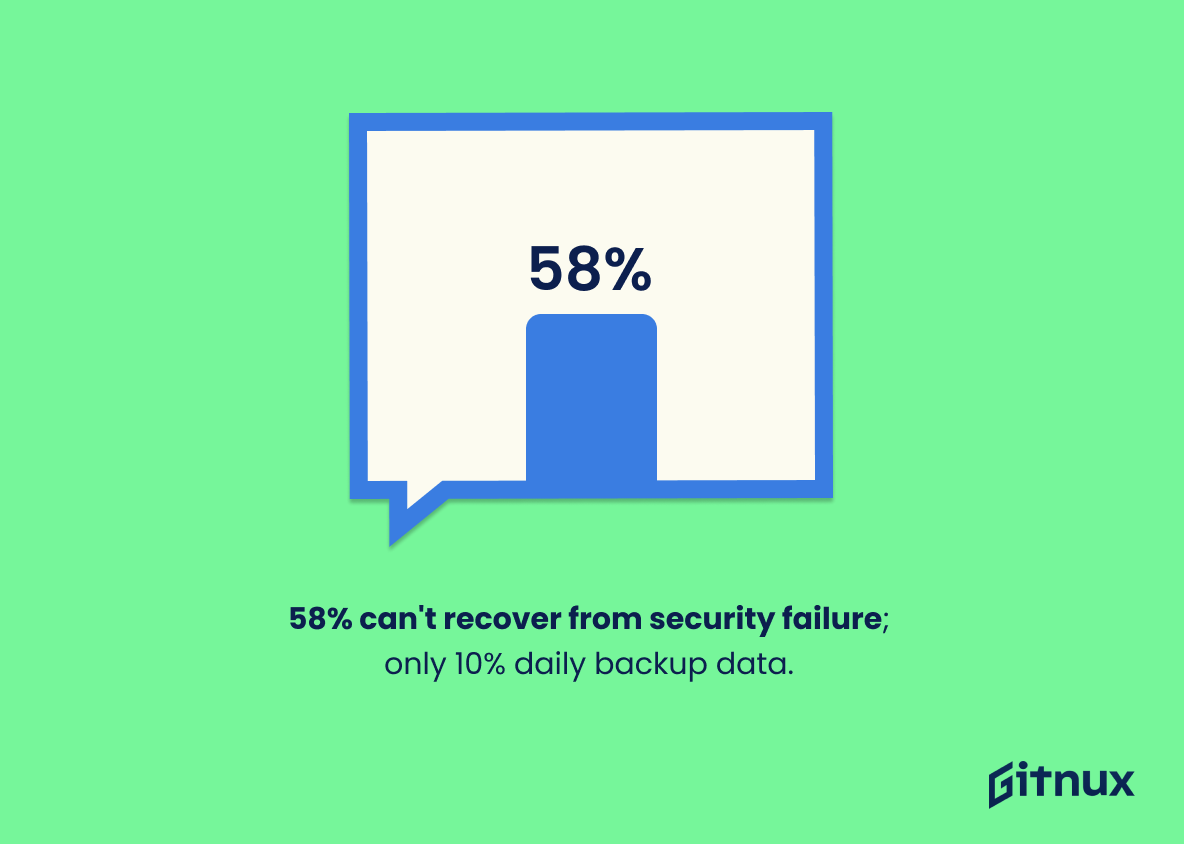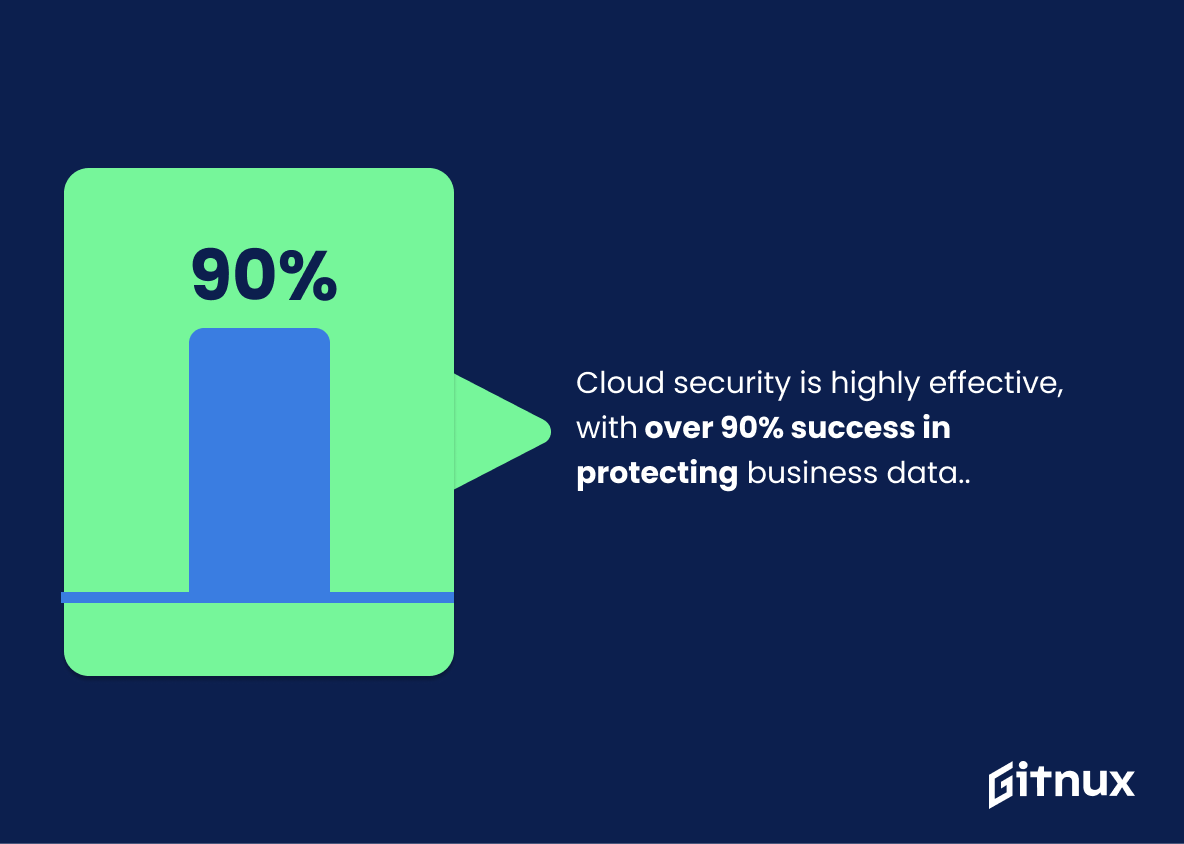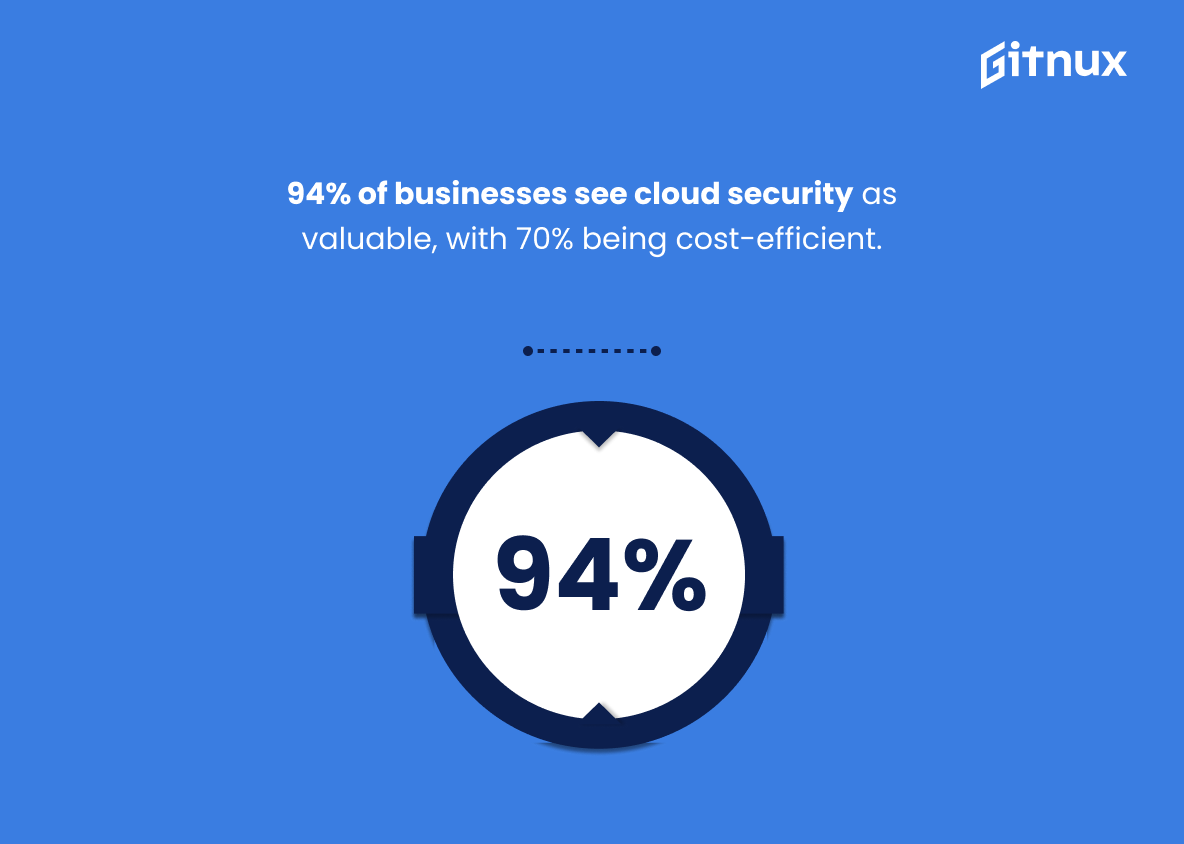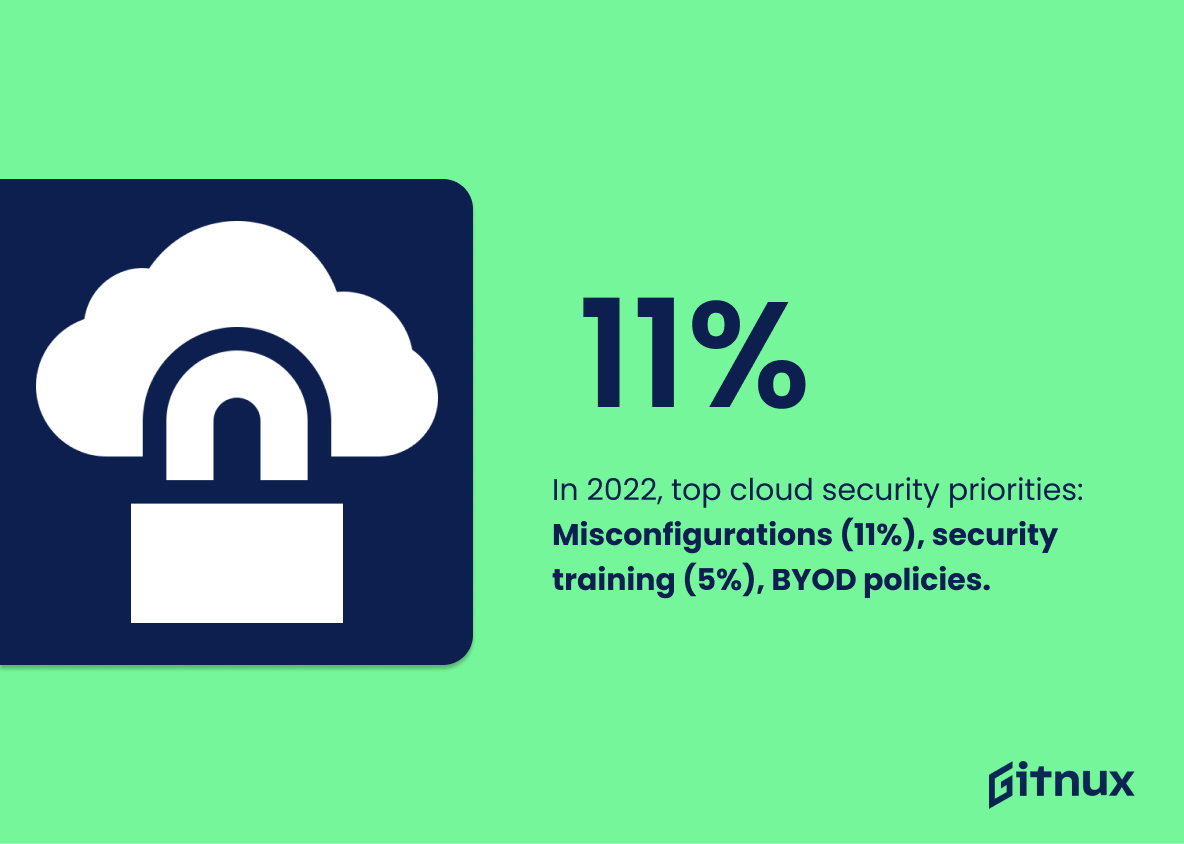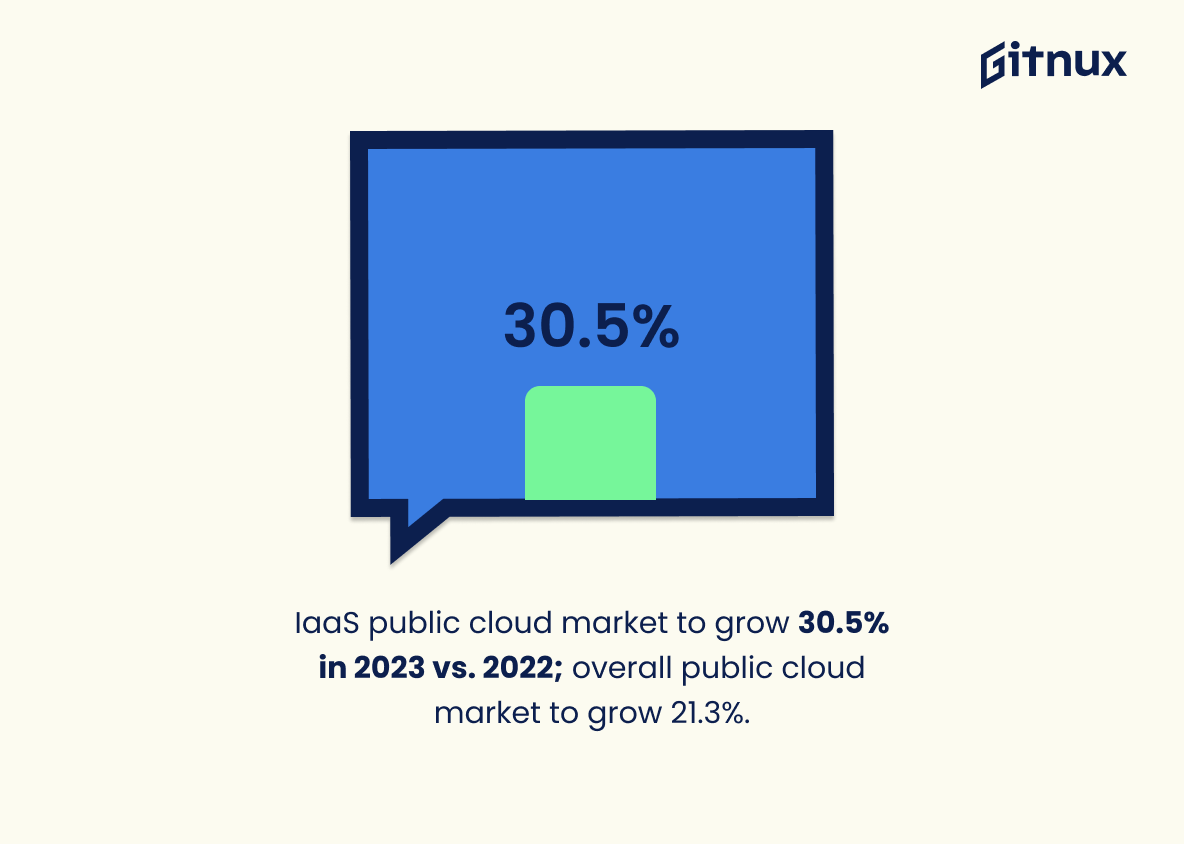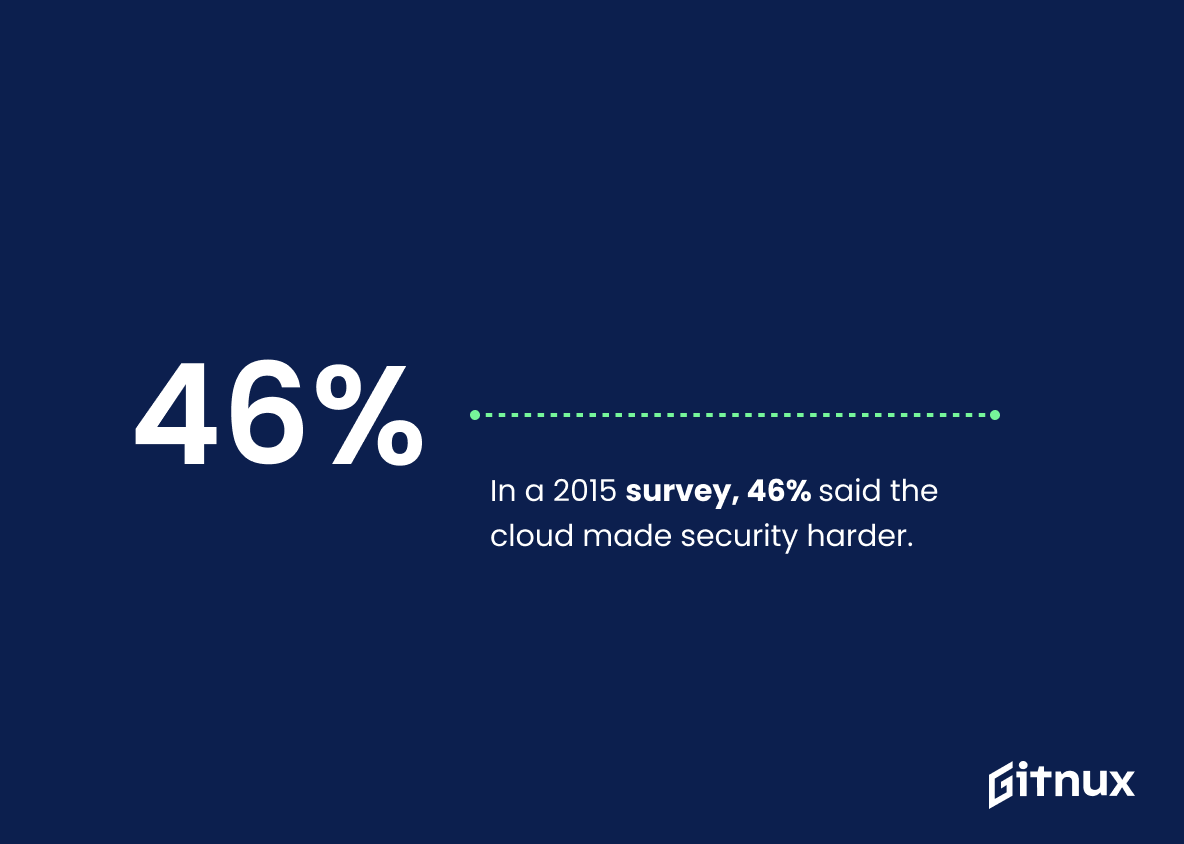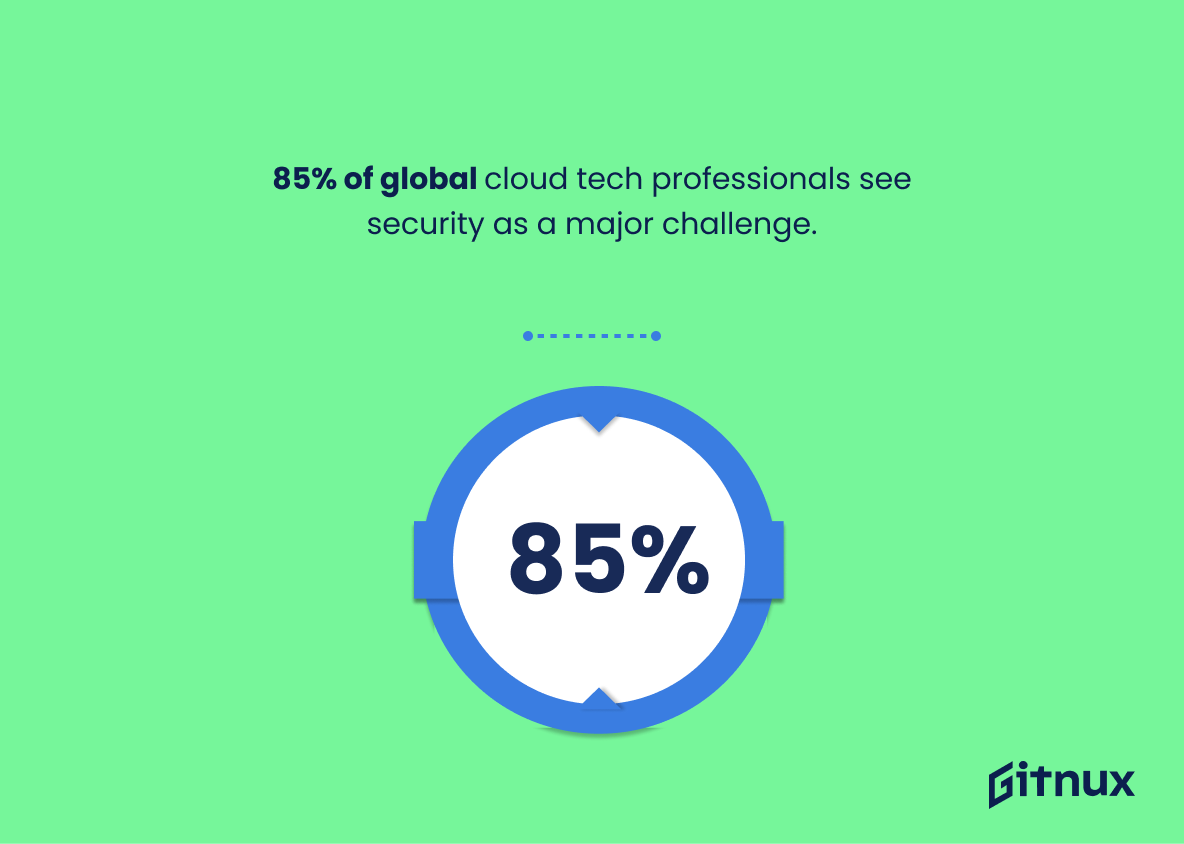Cloud security is an increasingly important topic in the world of technology. As more businesses move their data and operations to the cloud, it’s essential to understand the security risks and the best practices for protecting your data.
In this blog post, we’ll take a look at some of the latest cloud security statistics to give you a better understanding of the current state of cloud security. We’ll also discuss the importance of staying up-to-date on the latest security trends and how to ensure your data is secure in the cloud.
Cloud Security: The Most Important Statistics
82% of cloud security breaches are caused by a lack of employee skills.
83% of businesses do not encrypt their sensitive data when using the cloud, despite the complexity of the process.
Cloud Security: Statistics Overview
30% of businesses are not engaging with efficient security controls, which can lead to security problems.
This is important to consider when discussing the advantages and disadvantages of cloud security for businesses.
More than 80% of a company’s workload is on the cloud due to the advantages of cloud security.
This statistic matters in the context of cloud security statistics because it shows how companies are increasingly relying on cloud security to store their workloads. This highlights the importance of cloud security and how it is becoming a more popular choice for companies to store their data.
82% of cloud security breaches are caused by a lack of employee skills. This matters in the context of Cloud Security Statistics because it highlights the importance of training employees in order to prevent security breaches.
If employees are not properly trained in cloud security, they are more likely to make mistakes that can lead to security breaches. Therefore, it is essential for companies to invest in training their employees in order to ensure the security of their cloud systems.
68% of cloud takeovers are a major threat to cloud security systems.
This statistic matters in the context of Cloud Security Statistics because it highlights the prevalence of cloud takeovers and the potential risks that businesses face when using cloud security systems. It also highlights the need for businesses to be aware of the security threats posed by cloud security systems and to take steps to protect their data and systems from these threats.
83% of businesses do not encrypt their sensitive data when using the cloud, despite the complexity of the process.
This matters in the context of Cloud Security Statistics because it shows that businesses are not taking the necessary steps to protect their data, which can lead to security breaches and data loss. This highlights the need for businesses to be more aware of the risks associated with storing data on the cloud, and to take the necessary steps to ensure their data is secure.
Only 40% of sensitive data is not encrypted, and organizations use external cloud providers to store sensitive data for security purposes.
This statistic is important in the context of Cloud Security Statistics because it shows that organizations are taking extra security measures to protect sensitive data, such as encrypting it and using external cloud providers. This indicates that data privacy is a priority for organizations, and that they are taking steps to ensure that their sensitive data is secure.
58% of businesses cannot afford to recover from a security failure, and only 10% of businesses perform a daily backup of their data.
This matters in the context of Cloud Security Statistics because it highlights the importance of having a backup plan in place in order to protect data and avoid financial losses in the event of a security breach. Without a backup plan, businesses are at risk of losing valuable data and resources.
Over 80% of data backups are uploaded to the cloud, making data security more secure than other devices.
This statistic matters in the context of Cloud Security Statistics because it shows the prevalence of cloud-based data backups, which are more secure than other devices. This indicates that cloud security is an important consideration for organizations when it comes to protecting their data.
Cloud security is a highly effective and cost-effective measure for protecting business data, with over 90% of businesses in the study claiming it was successful.
This statistic is important in the context of cloud security statistics because it shows that cloud security is a viable option for businesses to protect their data. It also demonstrates that businesses are finding cloud security to be a cost-effective measure in the long run, which is an important factor for businesses when deciding on a security solution.
94% of businesses view cloud security as a great asset, and 70% of companies are highly efficient and cost effective with it.
This statistic matters in the context of Cloud Security Statistics because it shows that businesses are increasingly recognizing the benefits of using cloud security, and that it is an efficient and cost-effective way to protect data. This is important because it shows that businesses are increasingly turning to cloud security as a reliable and secure way to protect their data.
Preventing cloud misconfigurations was the most important cloud security priority for companies in 2022, with 11% citing cloud security training and 5% citing BYOD policies.
This matters in the context of Cloud Security Statistics because it shows the importance of understanding and addressing the most pressing cloud security issues in order to ensure the safety and security of data stored in the cloud. Companies should prioritize preventing cloud misconfigurations and also consider investing in cloud security training and BYOD policies to further protect their data.
The IaaS segment of the public cloud services market is expected to grow by 30.5% in 2023 compared to 2022, while the overall public cloud services market is predicted to grow by 21.3%.
This statistic is important in the context of cloud security statistics because it shows the growth of cloud services, which is important to consider when assessing the security of cloud systems. As the use of cloud services increases, so too does the need for security measures to protect the data stored in the cloud.
46% of respondents in a 2015 survey said that a cloud environment has made security more difficult to achieve.
This statistic is important because it shows that cloud environments can make security more challenging to achieve, which is an important factor for businesses to consider when deciding whether or not to use cloud computing. This statistic can help businesses make informed decisions about their cloud security strategies and can also help them identify areas where they need to focus their efforts in order to ensure their cloud security is up to date.
19% of respondents in a 2019 cloud deployment survey view the ability to switch between cloud types as the main benefit of using a hybrid cloud service.
This statistic is important because it shows that many organizations are taking advantage of the flexibility and scalability of hybrid cloud services. By using a hybrid cloud service, organizations can switch between public and private cloud environments as needed, allowing them to take advantage of the best features of both types of cloud services. This flexibility can help organizations better manage their cloud security needs, as they can adjust their cloud environment to meet their changing security requirements.
85% of technical executives, managers, and practitioners of cloud technologies from around the world found security to be a significant challenge when using cloud computing technology.
This matters in the context of Cloud Security Statistics because it shows that security is a major concern for cloud technology users, and that organizations need to be aware of this issue when considering cloud computing services. Additionally, it highlights the need for organizations to invest in security measures to protect their data and systems.
58% of companies in Italy reported that bad configurations were the main cloud security issue, while 47% and 42% reported unauthorized access and ransomware as the main issue, respectively.
This statistic is important in the context of Cloud Security Statistics because it provides insight into the most common cloud security issues that businesses in Italy are facing. This information can be used to inform cloud security policies and strategies, as well as to identify areas of improvement.
In 2021, 51.8% of respondents in Spain said they were extremely satisfied with Google, while 51.4% were content with Amazon Web Services (AWS) and only 36.4% were pleased with IBM’s cloud services.
This statistic matters in the context of Cloud Security Statistics because it shows that Google and AWS are the most popular and trusted cloud providers in Spain, while IBM is lagging behind in terms of customer satisfaction. This could be an indication of the quality of their cloud security services.
In 2021, AWS was responsible for 50% of all identified instance vulnerability, with Microsoft Azure and Google Cloud taking second and third place respectively.
This is important for cloud security as it highlights the need for organizations to be aware of the potential risks associated with misconfigurations and forgotten instances.
As of August 2022, the Google Cloud Marketplace offered 5,000 products and services, 1,230 of which were virtual machines.
This statistic is important in the context of cloud security statistics because it shows the range of products and services available on the Google Cloud Marketplace. This provides customers with more options to choose from when selecting cloud solutions that meet their specific needs. Additionally, the statistic shows that there is a large selection of virtual machines available, which can help customers ensure that their data is secure and protected.
The global public cloud services market is expected to grow by 18.8% in 2022, reaching 490 billion dollars, but still only a small portion of the global IT services market.
This statistic matters in the context of cloud security statistics because it shows that the public cloud services market is growing rapidly, which means that more organizations are relying on cloud services for their operations. This growth also means that organizations need to be aware of the security risks associated with cloud services and take steps to ensure that their data and systems are secure.
Conclusion
Cloud security is an ever-evolving field, and the statistics presented here are just the tip of the iceberg. As more organizations move to the cloud, the need for secure cloud solutions will only increase.
Companies must stay up to date on the latest cloud security trends and statistics to ensure their data is safe and secure. With the right security measures in place, organizations can rest assured that their data is safe and secure in the cloud.
References
1 – https://www.cybertalk.org/2021/10/20/key-cloud-security-statistics-that-will-reshape-your-cloud-perspectives/
2 – https://www.copado.com/devops-hub/blog/cloud-security-advantages-and-disadvantages-to-accessibility
3 – https://expertinsights.com/insights/50-cloud-security-stats-you-should-know/#:~:text=the%20latest%20figures.-,The%20Frequency%20Of%20Cloud%20Attacks,up%2010%25%20from%20last%20year.
4 – https://swisscyberinstitute.com/blog/21-cloud-security-statistics-you-probably-didnt-know/
5 – https://www.securitymagazine.com/articles/96412-40-of-organizations-have-suffered-a-cloud-based-data-breach
6 – https://get.eftsure.com.au/statistics/cloud-computing-statistics/
7 – https://webtribunal.net/blog/backup-statistics/
8 – https://www.enterpriseappstoday.com/stats/backup-statistics.html#:~:text=84%25%20of%20businesses%20use%20cloud%20backup.&text=Because%20of%20the%20cloud’s%20accessibility,or%20large%20companies%20(81%25).
9 – https://www.salesforce.com/products/platform/best-practices/benefits-of-cloud-computing/
10 – https://cloudlytics.com/major-security-benefits-of-cloud-computing/
11 – https://www.statista.com/statistics/1319165/global-cloud-security-priorities/
12 – https://www.statista.com/statistics/258718/market-growth-forecast-of-public-it-cloud-services-worldwide/
13 – https://www.statista.com/statistics/501337/worldwide-cloud-computing-challenges-and-benefits/
14 – https://www.statista.com/statistics/1081654/hybrid-cloud-environment-organization-worldwide-benefit/
15 – https://www.statista.com/statistics/511283/worldwide-survey-cloud-computing-risks/
16 – https://www.statista.com/statistics/1313223/cloud-security-problems-companies-italy/
17 – https://www.statista.com/statistics/1291401/spain-companies-cloud-providers-satisfaction/
18 – https://www.statista.com/statistics/1251443/exposure-public-cloud-provider/
19 – https://www.statista.com/statistics/1246139/google-cloud-number-of-services-marketplace/
20 – https://www.statista.com/statistics/203578/global-forecast-of-cloud-computing-services-growth/
ZipDo, cited June 2023: Cloud Security Statistics
